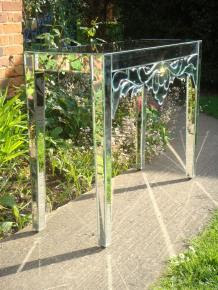
Which came first — the art or the garden? Impressionist artist, Claude Monet was first an artist. When he moved to Giverny, he became an obsessed gardener. His garden was designed not only for his enjoyment as a gardener, but as a subject for his paintings.
Monet's Gardens at Giverny have been reconstructed from his paintings, over 500 of which were based on his gardens.
Pastel colors are abundant, but there are also swaths of bright yellow, orange and red. The photos shown here were taken in the May, but the garden colors and flowers change with every season.
Tulips, wallflowers and pansies provide much of the bold color in the spring gardens inside the walled gardens, named the
Clos Normand, at Giverny.

One of my favorite books is
The Impressionist Garden by Derek Fell. Given to me so many years ago, this well-worn book served as inspiration for my gardens as I dreamed of someday visiting the gardens in France.
After visiting Giverny in May 2009, I found the courage to try the bolder colors in my garden. I set about rearranging plants last fall and eagerly await the first results this summer. Mind you, I'll never have a Giverny, but in small vignettes through my borders, I have planted little pockets of orange, red, yellow and gold.
Not having the same space, place or climate, I look for substituting plants of the same colors, but not necessarily of the same variety or used in the same season. My spring colors are still based upon the pastel colors of purple, blue and pink. But, my summer and fall color scheme in 2010 will include colors inspired by Giverny.

I have planted a swath of bright orange and gold gaillardia at the feet of red monarda 'Jacob Kline' that is set among salvia greggii 'Bright Navajo Red' and crocosmia 'Lucifer'. Marigolds in orange and zinnias in soft golden yellow will be sown as seeds when the soil warms up in the spring. The deep green foliage of osmanthus fragrans and white oleander serve as a buffer between this vignette and another.
The deep red tulips planted at the edge of Monet's Water Garden are stunning paired with green foliage of irises, planted beneath a weeping tree. This is a color combination that I'd also like to replicate using red geum. I planted my first geum in summer 2009 and will see how well it overwintered and if it continues to be deer and rabbit resistant.
My
pineapple sage, when in bloom beside the clumping bamboo, is the closest that I've come so far in achieving the red and green duo. If you don't have deer or rabbits, you can probably come up with many more possibilities!

One of the most beautiful flowering shrub displays at Giverny in May was the clustering of soft apricot-orange and bright red azaleas with a Japanese Maple. This is a combination that can be tried by studying the colors available in the rhododendron family until you get just the right colors to work with the burgundy foliage of the maple.
Native azaleas come to mind as good options for the edge of woodlands. Rhododendron austrinum (Flame Azalea) is a flashy orange-flowering native for USDA zones 6-10; part sun to shade in moist soil.
Behind this color scheme, large trees divide the bright colors from the soft, lavender panicles of wisteria growing on Monet's bridge, trellises and arbors around the pond.


Proving that not all garden color has to come from plants, this big rooster proudly holds court at the entrance to Monet's Clos Normand!
 Location: Giverny, France; May 2009; Words and photos by Freda Cameron, Defining Your Home, Garden and Travel. All company or product or patented names mentioned are registered trademarks/copyrights/patents owned by those respective companies or persons.
Location: Giverny, France; May 2009; Words and photos by Freda Cameron, Defining Your Home, Garden and Travel. All company or product or patented names mentioned are registered trademarks/copyrights/patents owned by those respective companies or persons.






































.png)
.png)

















